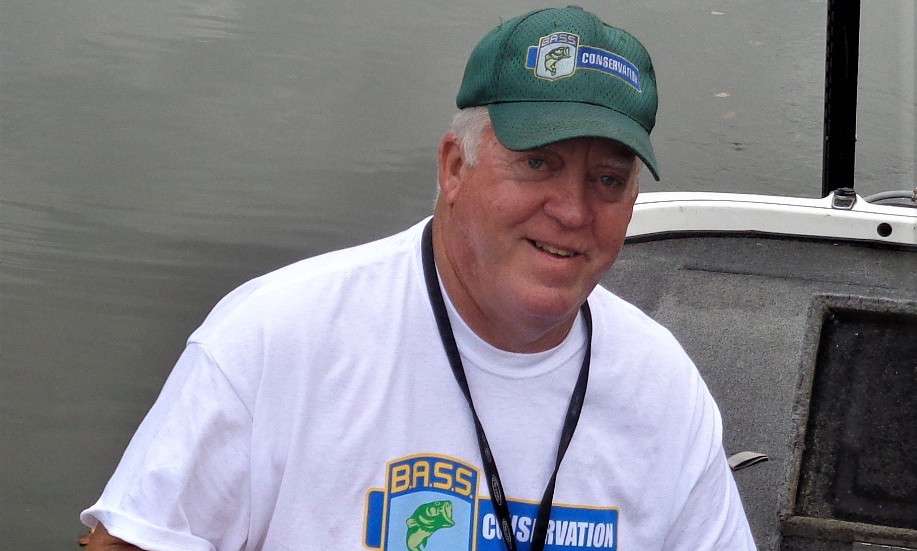
MIDDLE RIVER, Md. – When Scott Sewell says that state conservation directors are the “most important position” in the B.A.S.S. Nation (BN), you can trust that he knows what he is talking about.
The retired state trooper and U.S. Marshal has been Maryland’s conservation director for 20 years and a B.A.S.S. member for more than 30.
During that time, the founder of the Middle River Bass Club has led by example, helping to plan and carry out habitat projects and spearheading number stocking efforts in the upper reaches of Chesapeake Bay and its tributaries. As a guest speaker, he’s also educated various angling and community groups about these conservation efforts.
“My goal as conservation director is to take any action that enhances bass populations and creates more fishing opportunities in Maryland,” said the man who also is MBN’s Northern Region director, as well as a member of the Maryland Black Bass Advisory Subcommittee and an alternate member of the Maryland Sport Fish Advisory Committee.
B.A.S.S. National Conservation Director Gene Gilliland notes that Sewell’s participation on those committees has been instrumental in providing Maryland Department of Natural Resources (MDNR) with tournament angler input as they crafted new rules and regulations governing fishing contests.
Sewell also has been an outspoken champion for anglers in the wake of fish kills that damaged bass populations in tributaries of the upper bay during 2015 and 2016, especially for the former when about 200,000 fish died in the Middle River.
Gilliland said of Sewell, “Scott is a conservation watch dog, looking out for the health of Chesapeake Bay and its bass population. But when he finds a problem, he can become an attack dog – making sure that the authorities are doing their job and responsible parties are brought to task.”
“I was in the headwaters area today, and it’s the worst that I’ve seen yet,” Sewell said in one of the many Facebook posts he made, complete with photos, documenting his investigation. “The ground is covered with fish. It’s sickening.”
The Maryland Department of the Environment linked both events to toxic algae blooms, but for the larger 2015 kill, Sewell and others suspected that chemical pollution played a role.
Just before that kill, Sewell and other volunteers had bought and stocked 150 adult bass, as a supplement to efforts by the Maryland Department of Natural Resources (MDNR).
Tidal, brackish water bass fisheries aren’t nearly as productive as their freshwater counterparts, necessitating regular supplemental stockings. Since 1980, MDNR has released more than 5 million bass into Chesapeake Bay tributaries.
Sadly, the problem has become even more pronounced in recent years. “While Middle River used to be a great bass fishery, urbanization of that watershed likely led to greater saltwater intrusion, nutrient influx and reduced productivity for bass,” said MDNR tidal bass biologist Joe Love, who added that Sewell and MBN have been valuable partners in both stocking and habitat projects.
“We partnered with Maryland B.A.S.S. Nation and others to build reefs in tidal freshwater at National Harbor on the Potomac River, the first tidal freshwater reefs in Maryland,” he added. “In general, it’s best to protect habitat, but it’s hard to fight the tide.”
National Harbor, also known as Smoots Bay, used to be one of the most productive spawning areas in the Potomac, and the reefs could make it that way again.
Arguably, Sewell, MBN President Roger Trageser and Second Vice President Dick Berich provided the inspiration for the project, as well as muscle for placing 40 concrete reef balls and then 10 heavy wooden pyramids this past November.
“Through all of this work, all of this effort, we hope to produce an awesome spawning area,” Sewell said.
“We’re always brainstorming about ways to improve the fishing,” he added. “Through aggressive stocking and providing structure, we hope to revitalize these areas.”
And with habitat now in place that could boost natural reproduction, Sewell once more is speaking out on behalf of conservation. “The area should be offlimits during the spawn for a couple of years,” he said.





